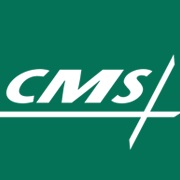Why Healthcare Bundled Payment Models May Expand in 2017
MACRA legislation is likely to push CMS and commercial payers to continue investing in bundled payment models and value-based care.

- The Centers for Medicare & Medicaid Services (CMS) have advanced bundled payment models by implementing these value-based payment structures in orthopedic and cardiac care. CMS released a finalized bundled payment model for cardiac and orthopedic care in December 2016.

CMS also published a report in September 2016 about the Bundled Payments for Care Improvement (BPCI) program, which shows that model 2 hospitals were able to save $864 per episode of orthopedic surgery and care on average. Dave Terry, CEO of Archway Health, spoke with HealthPayerIntelligence.com about some of the specifics coming out of the CMS Innovation Center and its bundled payment models.
“Cardiac and joint replacement programs have not started yet so results are not available,” Terry explained. “However, CMMI [Center for Medicare & Medicaid Innovation] programs are seeing cost savings. A study was reported in 2014 showing they’re seeing savings for many bundles. CMS is pushing forward more bundled payment models because of these cost savings.”
Some of the typical obstacles that CMS encountered when moving forward with bundled payment models involve the first steps in building a major payment transformation through the BPCI program. It took CMS several years before finalizing the program, said Terry.
“For CMS, the biggest challenge was starting the BPCI program. The first proposals came out in 2011 but it was finalized only in late 2013,” continued Terry. “The design, reconciliation, and sharing data were some of the challenges CMS encountered that are now reconciled. CMS spent time making sure providers have scale.”
When implementing bundled payment models, payers need to understand how to scale and decide on the definitions of bundles and which episodes of care to pursue.

A prospective payment involves establishing a budget for an episode of care when specific criteria for the episode are achieved, according to the Health Care Incentives Improvement Institute. The payment is then reimbursed to a fiscal intermediary or a provider organization like an accountable care organization, which then dispenses the fee to the providers who worked on the episode of care.
Retrospective payment, on the other hand, involves calculating the fee in advance and then reconciling it using fee-for-service claims once the episode of care has ended. To overcome some problems with bundled payments, payers should implement prospective reconciliation, said Terry.
“As of August 2016, CMS bundled payment models have shown positive outcomes with a reduction in hospital readmissions,” Terry added.
Along with the cost savings of bundled payment models, CMS and partnering providers were able to cut hospital readmission rates and decrease the length of hospital stays as well.
“Patients are returning home faster from nursing homes,” said Terry. “Patient outcomes in mobility have been positive. Most of all, readmissions dropped.”
The future for bundled payment models is also expected to move forward and expand, Terry explained. Since MACRA legislation is bipartisan, value-based care reimbursement is likely to continue between CMS and the provider community. Providers are likely to move from the Merit-based Incentive Payment System (MIPS) to advanced Alternative Payment Models (APMs) as well, said Terry.
“We expect activity in bundled payments to increase,” he continued. “CMS is likely to advance the BPCI program. New alternative payment models will likely be available for providers to move from MIPS to advanced APMs since MACRA is bipartisan and Tom Price supported it.”
MACRA legislation is “changing how providers are paid and 2017 will be a big year for that,” explained Terry. Bundled payments and the regulation around them are “pushing the commercial market to value-based care.”
Terry also provided advice for commercial payers looking to start operating a bundled payment program. First, payers should get started as soon as possible. Also, analyzing data intelligently and choosing the right providers to partner with will be key.
“Start soon. It’s never too early to start,” Terry concluded. “Insurers will need to continue to learn everyday. Evaluate data critically to decide which provider network to work with. To conclude, insurers should keep it simple and start soon.”
Dig Deeper:
How to Overcome the Challenges of Bundled Payment Models
How Medicare, Medicaid, and CHIP Guide the Health Payer Industry
